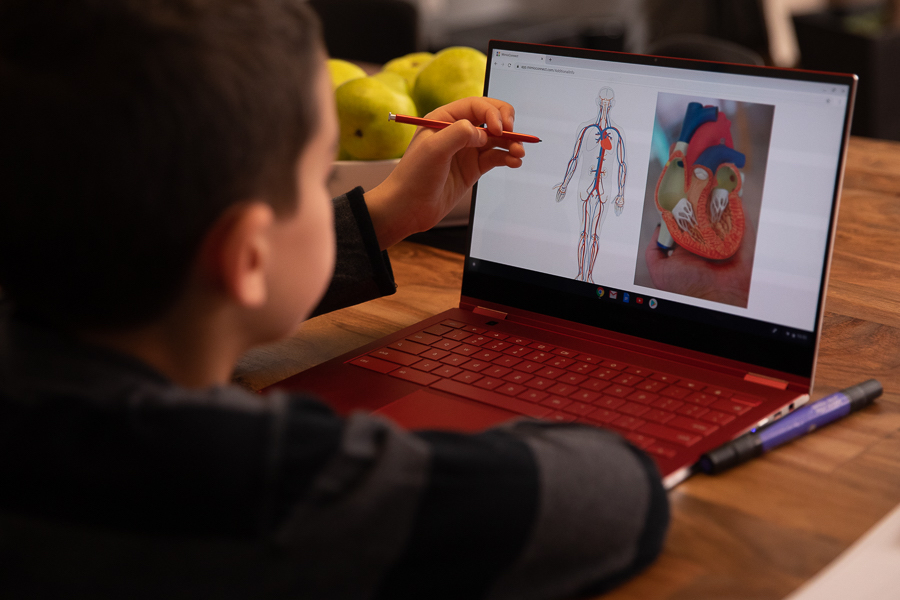Businesses across vertical markets are constantly facing compliance issues. Whether it’s healthcare companies that need to comply with HIPAA (the Health Insurance Portability and Accountability Act of 1996) regulations, or retail establishments that must adhere to Payment Card Industry Data Security Standard (PCI DSS), compliance is one of the many concerns that every IT team must consider.
Educational organizations — from K-12 to higher ed — have their own set of compliance standards to consider, especially around protecting student data and personally identifiable information (PII). According to the Data Quality Campaign (DQC)1, “Between 2014 and 2020, 45 states and Washington, DC enacted new student data privacy laws to guide the protection of student data.” These laws, DQC notes, have “largely focused on creating data governance and transparency responsibilities for state education agencies, and instituting requirements and restrictions for online education service providers.”
But what does this mean, practically? When it comes to data privacy in schools, it’s up to IT decision makers and compliance officers to find a student data privacy solution that keeps student data protected without putting too much pressure on the IT staff, educators or students.
A laundry list of regulations
Educational data security and compliance regulations are different in every state. However, in 2020, policymakers introduced bills2 regarding, “attendance and enrollment data; assessments, reporting, and accountability; data for state leaders to understand where students are academically; local data needs; and effects of online learning,” according to the DQC.
There are federal requirements as well, including the Family Educational Rights and Privacy Act (FERPA) and the Protection of Pupil Rights Amendment (PPRA). These regulations are applicable to any school that receives funding from the U.S. Department of Education. FERPA, according to the Department of Education, “is a federal law that affords parents the right to have access to their children’s education records, the right to seek to have the records amended, and the right to have some control over the disclosure of personally identifiable information from the education records.”
Your guide to SSDs in the virtual classroom
Virtual learning is here to stay. Learn why fast, reliable storage is critical for educational institutions. Download Now
Educators must make sure that student PII and related information are kept confidential and not shared, sold or stolen under any circumstances. At the very minimum, data must be encrypted — both in motion and at rest. SATA hard drives are an ideal option to make this happen. Here’s why.
SATA checks all the boxes
Serial advanced technology attachment (SATA) is a common interface used in many desktop and laptop hard drives. Introduced in 2000, SATA meets reliability and compatibility requirements, and is still the connection interface used by schools and educators faced with the task of connecting their storage offerings to older PCs, laptops and servers. More importantly, they now have the option of taping SATA solid state drives (SSDs) to increase the durability, reliability and security, thus protecting student data during transport and at rest.
Solid state drive (SSD) storage uses non-volatile solid state chips that feature flash memory cells for storing data on a long-term basis. Unlike traditional hard disk drives, which use magnetic platters spinning at high speeds and an actuator arm reminiscent of a record player, SSDs require no moving parts. Instead, the storage solution depends entirely on flash memory to store data, which makes them much faster at reading and writing data, both ad hoc and in sustained operations. Samsung SATA-based SSDs are an ideal solution for educational settings because they fit a wide variety of machines at an affordable price. They are compatible with older machines as well as machines from different manufacturers.
From a security standpoint, which is crucial for compliance, SATA SSDs have encryption built in, so student data is automatically protected. If a drive is stolen or lost, student data remains untouchable. SATA-based SSDs also come in a wide variety of sizes, ranging from 250GB to 8TB. This span means you’re not wasting money on storage that you don’t need or won’t use, and you can get the right amount of storage for every use case.
To learn more about Samsung SATA SSD drives, check out this article on how they differ from non-volatile memory express (NVMe®).
1 DQC. “Centering Privacy.” June 15, 2023.
2 DQC. “Education Data Legislation Review 2020.” June 15, 2023.








